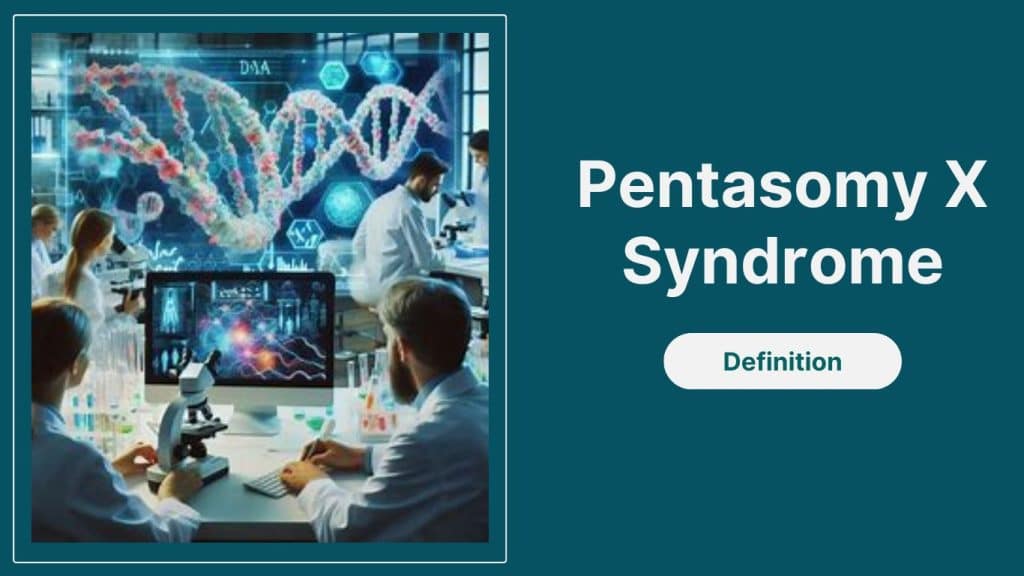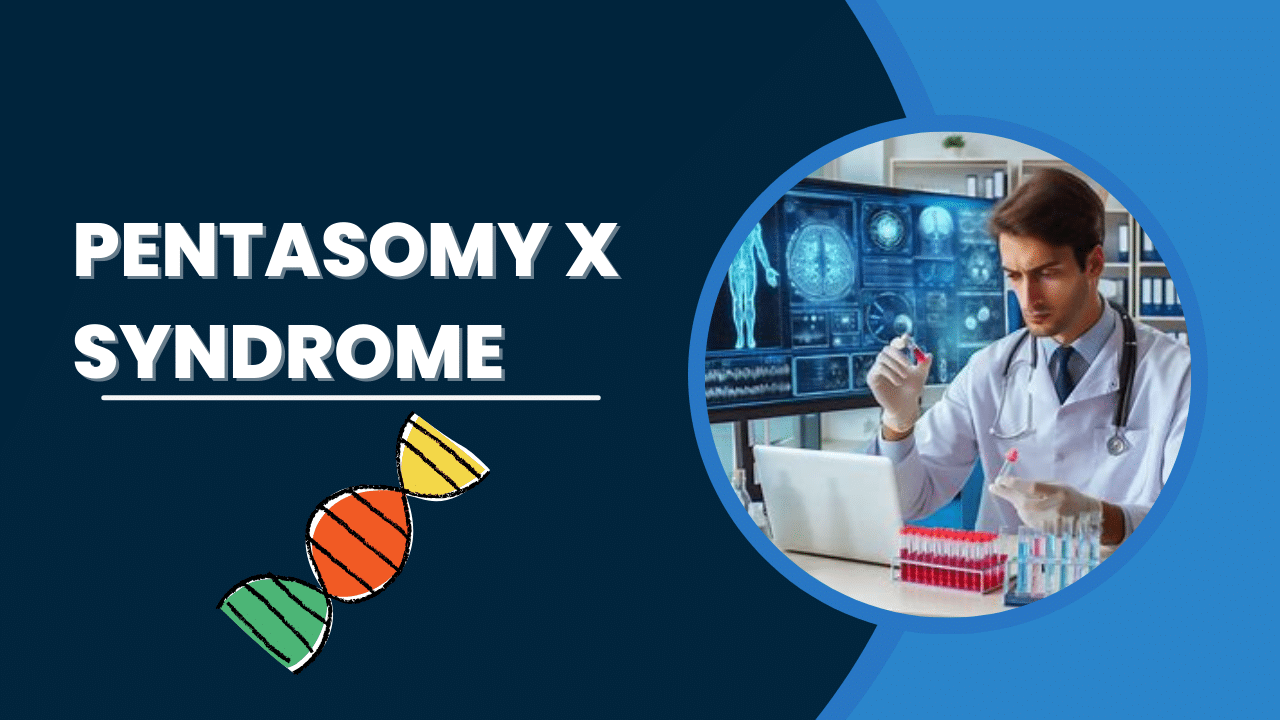I. Understanding Pentasomy X: Overview
A. Definition of Pentomy X
Pentasomy X is a rare genetic condition caused by the presence of five chromosomes instead of the usual two in females. unique chromosomal makeup to a range of developmental characteristics that set it apart from more commonly recognized conditions.

The was first documented in the early 20th century, but it has remained elusive within medical literature, which adds to its intrigue and complexity.
Prevalence is another fascinating aspect of Pentasomy X. Though exact numbers are hard to determine due to its rarity—affecting only a handful of individuals globally—it is understood that it predominantly occurs in females.
Awareness and understanding of Pentasomy X are slowly gaining ground, revealing its demographic nuances and significant clinical implications.
B. Genetic Mechanisms
The underlying genetic mechanisms of Pentasomy X revolve around chromosomal anomalies. These arise during cell division when chromosomes fail to separate correctly, leading to an extra copy of the X chromosome. This error can happen in either the mother or father’s genetic material. While we often hear about conditions like Down syndrome (trisomy 21), Pentasomy X falls into the category of aneuploidies—where an abnormal number of chromosomes can have serious implications for development.
The concept of gene dosage plays a crucial role in Pentasomy X. With more copies of genes associated with the X chromosome, individuals may experience developmental differences that can be quite pronounced when compared with those who have typical chromosomal patterns.
Pentasomy X involves five X chromosomes, while Hunter Syndrome, caused by mutations in the I2S gene, provides a well-documented example of how genetic anomalies can impact health.
C. Clinical Features
Individuals with Pentasomy X often present with a myriad of physical and developmental characteristics. Common features can include taller stature, reduced muscle tone, and delicate facial features. However, the range of symptoms is exceptionally varied. Some may experience mild developmental delays, while others could face more significant challenges in cognitive or physical abilities.
Associated health issues can include heart defects, kidney malformations, and other systemic conditions that can complicate life for those affected. Each person with Pentasomy X is unique, leading to an exciting yet challenging landscape of clinical features.
(How to Avoid the Dreadful Alpha-Gal Syndrome)
II. Diagnosis and Identification of Pentasomy X
A. Diagnostic Procedures
Diagnosing Pentasomy X usually requires specific genetic testing methodologies. Karyotyping, which involves analyzing the number and structure of chromosomes, plays a crucial role in confirming the diagnosis. This testing not only identifies the extra X chromosomes but helps illustrate the chromosomal makeup in detail.
Early identification is vital. The sooner Pentasomy X is diagnosed, the sooner appropriate management strategies can be enacted, which can significantly improve quality of life. Not only does early intervention help with physical health, but it also paves the way for educational and psychological support.
B. Distinguishing from Other Conditions
Pentasomy X can share symptoms with other genetic conditions, which sometimes leads to confusion. For instance, it’s essential to differentiate it from Triple X syndrome and Turner syndrome, which also involve X chromosome variations but carry different implications and characteristics.
Common misconceptions, such as assuming all X-related conditions present similarly, can lead to misdiagnoses. This underscores the importance of accurate genetic counseling. Counselors can guide families through the complexities, ensuring they receive the correct information regarding symptoms and management.
C. Case Studies and Reports
Notable case studies have helped illuminate the unique presentations of Pentasomy X. For example, families have shared personal narratives highlighting struggles, triumphs, and the impact of this condition on their lives. These stories not only contribute to a growing body of research but also provide invaluable insights into the lived experiences of those affected.
III. Impact on Individuals and Families
A. Physical and Psychological Effects
The physical health implications of Pentasomy X can be profound. Individuals may experience long-term health challenges that require ongoing medical attention. However, the psychological effects are often equally significant. Many face heightened levels of anxiety, depression, and other mental health challenges that can accompany developmental differences.
Families are often left navigating a complex maze of treatments, therapies, and emotional needs. Developing strategies for support—such as fostering open communication and seeking professional help—can greatly enhance coping mechanisms for both individuals and their loved ones.
B. Social and Educational Challenges
Social interactions can be particularly challenging for individuals with Pentasomy X. Difficulties may arise in learning and cognitive development, making navigating school systems and forming friendships complex. It becomes crucial to advocate for appropriate educational resources tailored to their needs, ensuring that these individuals receive the support necessary for their growth.
C. Family Dynamics
For families living with Pentasomy X, every day can present unique challenges. The road can be tough, but many find strength through support networks and resources tailored for them. Community education and awareness about the condition are essential, helping remove stigma and build understanding among peers and educators.
IV. Advances in Research and Treatment
A. Current Research Trends
Ongoing genetic studies are beginning to focus on Pentasomy X, aiming to unravel its mysteries. Researchers are hopeful that understanding this rare condition can shed light on broader genetic science, paving the way for future discoveries.
Key areas of focus often include the developmental impacts of gene dosage and potential treatment pathways.
B. Treatment and Management Strategies
There isn’t a one-size-fits-all treatment for Pentasomy X, but many management strategies can improve quality of life. Medical interventions and supportive care can range from physical therapy to psychological counseling, tailored to each individual’s unique needs.
Multidisciplinary teams, including healthcare professionals from various fields, play a vital role in providing comprehensive care.
C. Ethical Considerations
The field of genetic research involves many ethical dilemmas, particularly surrounding rare conditions like Pentasomy X. Issues of informed consent and patient autonomy become crucial, especially when considering genetic interventions. Healthy debates about these topics can help shape a future where ethical standards guide groundbreaking research.
V. The Future of Genetic Research in Light of Pentasomy X
A. Implications for Genetic Counseling
Genetic counselors are becoming increasingly important in managing rare conditions like Pentasomy X. Their role not only involves clinical guidance but also community education, which can influence research funding and resource allocation for affected families. Best practices in counseling focus on empathy and education to ensure families feel supported and informed.
B. Genetic Engineering and Its Possibilities
Gene editing technologies hold exciting potential for the future treatment of Pentasomy X. While there is hope for innovative solutions, it’s essential to balance advancements with ethical considerations. The dialogue surrounding genetic engineering will shape how we approach these rare conditions.
C. Engaging the Scientific Community and Public
Building public awareness and education about Pentasomy X is crucial. Engaging researchers and healthcare professionals can help form a united front that advocates for better research priorities and resource allocation. Patient advocacy is key in this process, pushing for progress and broader societal understanding.
Conclusion
Pentasomy X is a rare but intriguing genetic condition that opens doors to exciting research possibilities. As we continue to learn more, it’s essential to foster awareness, educate the community, and support those affected. By doing so, we honor their experiences and pave the way for innovative solutions that can enhance their quality of life.
References
- A Rare Cause of Hypotonia: 49,XXXXX (Pentasomy X)
- Pentasomy X – Wikipedia
- XXXXX Syndrome – SpringerLink
- Non-Invasive Prenatal Screening: The First Report of Pentasomy X
Frequently Asked Questions (FAQs)
1. What are the signs of Pentasomy X?
Signs can include taller stature, developmental delays, and a variety of health issues but can vary widely among individuals.
2. How is Pentasomy X diagnosed?
Diagnosis typically involves genetic testing and karyotyping to identify the abnormal number of X chromosomes.
3. What support is available for individuals with Pentasomy X and their families?
Families can access medical support, psychological counseling, and educational resources tailored to their unique needs.
4. Can Pentasomy X be treated, and if so, how?
While there is no cure, management strategies can significantly improve the quality of life through medical care and supportive therapies.
5. What is the current state of research on Pentasomy X?
Research is ongoing, focusing on understanding its genetic mechanisms and exploring potential treatments to enhance the lives of those affected.
